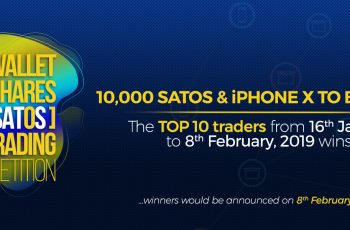Non-Fungible Tokens (NFTs): What Are They And How Do They Work?
Overview
Non-Fungible Tokens (NFTs) and other associated crypto and blockchain projects witnessed a massive rise in 2020. NFTs data project (NonFungible.com) reported that the sales of NFTs came close to $1 million in September 2020. The advent of blockchain technology and cryptocurrency has enabled the development of many projects. One of such projects is the NFTs.
There has been massive media buzz around these non-fungible tokens. In this post, we shall explore the concept of NFTs, what they are, and how they work. Whether or not you have heard about NFTs, this post will hold you by the hand and guide you through.
Also Read: Top DeFi Projects to look out for in 2021
What are Non Fungible Tokens (NFTs)?
They are cryptographic tokens that are indivisible and unique and are used to create digital scarcity and verify ownership. As the name says, non-fungible tokens cannot be interchanged. Like every other cryptocurrency, they are built on the blockchain but not interchangeable like other cryptos. No two NFTs are the same, unlike other cryptocurrencies that have identical coins/tokens.

These non-fungible tokens can be used to represent artworks, collectibles, real-world assets, in-game items, etc. You cannot interchange one NFT for another, and the whole cannot be broken down into smaller parts. These NFTs are mainly built on the Ethereum blockchain using the ERC-20 token standard.
Today, we have quite a number of non-fungible token projects doing greatly in the crypto space. We shall look into some of these projects later in this post. These NFTs became popular when CryptoKitties went viral and raised $12.5 million investment.
Characteristics of Non-Fungible Tokens
Here are some of the primary characteristics of non-fungible tokens:
-
They are rare
The value of non-fungible tokens (NFTs) comes from the fact that they are scarce. Developers can create any amount of non-fungible tokens, but they often limit the tokens to increase scarcity.
-
Indivisibility
Non-fungible tokens cannot be divided into smaller fractional units. You can either buy a digital art piece, or you don’t buy it at all.
-
Uniqueness
Non-fungible tokens are unique as no two NFTs are the same. All NFTs have a permanent information tab that keeps a record of their uniqueness. You can see this information as the certificate of authenticity.
Difference Between Fungible And Non-Fungible Tokens (NFTs)
A fungible crypto asset is an asset that is interchangeable with any other unit of the same asset. For example, one ETH is the same as any other ETH in circulation. Fungible tokens are also divisible; hence they can be broken down into smaller units that share the same properties. In essence, fungible tokens are indistinguishable from the other. These features make it possible for an asset to be used as a payment mechanism.
On the other hand, non-fungible crypto assets are indivisible and unique. Although all NFTs are built on smart contracts like ETH and DAI, these contracts contain specific information that makes each NFT different. Therefore, you cannot interchange one non-fungible token for another. Also, the whole cannot be broken down into a fraction of units.
Advantages of Non-Fungible Tokens (NFTs)
These non-fungible tokens bring a new dimension to digital interaction, and they have three major advantages.
-
NFTs are transferable
They are bought and sold on a special marketplace, and their value depends on their uniqueness.
-
NFTs preserve ownership rights.
NFTs use decentralized platforms where no owner can alter the data once it has been committed to the system.
-
They are authentic
Non-fungible tokens are powered by blockchain technology. Therefore, you have confidence that the NFT is genuine. It is highly improbable for someone to create fake NFTs using a decentralized, immutable ledger.
Read: Is Bitcoin the new Institutional Grade Safe-Haven Asset?
Non-Fungible Token Projects
Let us consider some of the trending non-fungible token projects so that you can have a better picture of what we have been saying. These non-fungible crypto assets projects include the following:
-
Ethernity
Ethernity is a project founded by long-standing crypto investor Nick Rose Ntertsas. The project is dedicated to exploring digital art using non-fungible tokens (NFTs). By working closely with leaders in the blockchain, music, and entertainment worlds, Ethernity aims to NFT-based art to the mainstream. They hope to use the proceeds for philanthropic purposes. Ethernity is one of the leading non-fungible token projects in the market.
-
KnownOrigin
KnownOrigin is also one of the best non-fungible token projects. The platform allows artists to showcase and sell their digital works and other collectibles. Before now, buying artworks has very high entry barriers for everyday people. It is always difficult to prove the authenticity of artwork without the help of an art expert. KnownOrigin helps users easily identify an artwork’s authentic owner, thus having confidence in their purchase.
-
Cryptograph
Cryptograph is also one of the best non-fungible token projects you can find out there. Recently, Paris Hilton sold her digital painting of a cat for 40 ETH through Cryptograph. The platform allows users to sell collectibles such as famous drawings, diagrams, or paintings. Celebrities like Ashley Greene and Seth Greene have posted their work on the platform for auction.
Non Fungible token Uses Cases.
Today, we have several non-fungible tokens uses cases. CryproKitties is arguably the most popular application of non-fungible tokens. The application allows for the buying, selling, and breeding of adorable digital cats. The project was launched on November 28, 2017. Within a space of two weeks, it had more than 150,000 users with over $15 million in transactions. The platform became a viral sensation when a single CryptoKitty was sold for $170,000. It attracted a new audience of gamers to Ethereum with more global mainstream attention.
Other non-fungible token use cases include the following:
- The creation of crypto or digital collectibles
- They can be used to manage ownership of digital arts while also allowing artists to retain their copyright.
- Non-fungible tokens (NFTs) can be used to create a digital system that allows users to control their data from a single point.
- It allows for the fractional ownership of high-value items like real estate.
Conclusion
The non-fungible tokens (NFTs) space is still in its infancy, and there is no knowing which project to bank on. You should see new platforms edge out some of the current ones to lead the NFT projects in 2021. Currently, NFT is gradually abandoning gaming and CryptoKitties and moving on to DeFi, digital identity, and painting.

